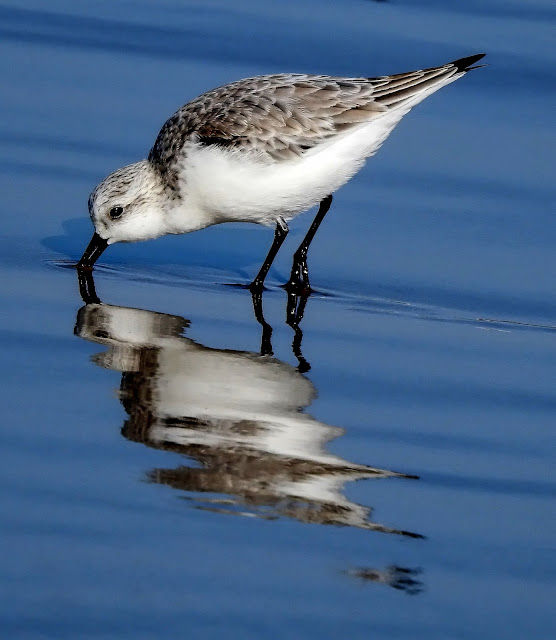This Blog contains Wildlife, Plants and Bird Photos from Walks, Safaris, Birding Trips and Vacations. Most of the pictures have been taken with my Nikon P900 and P950X cameras. Just click on any image for a larger picture. On the right column under the Blog Archive are the entries by date. Below that under Animal categories all the diffent species of Animals, Birds, Insects and Plants contained in the website are listed. Clicking on any entry will show all the entries for that species.
TOTAL PAGEVIEWS
TRANSLATE
Showing posts with label SANDERLING (Calidris alba). Show all posts
Showing posts with label SANDERLING (Calidris alba). Show all posts
Wednesday, 6 April 2022
Saturday, 11 January 2020
Thursday, 12 October 2017
1-10-2017 DEVESA, VALENCIA - SANDERLING (Calidris alba)
The sanderling, Calidris alba, is a small, dynamic wading bird, easily recognized by its plump form and stout bill. In non-breeding plumage, it presents a very pale, almost white appearance, save for a dark shoulder patch. Come summer, the bird's face and throat adopt a brick-red hue. Juveniles are more striking, with a spangled black and white pattern offering greater contrast.
Adult sanderlings in breeding plumage can be confused with stints due to their size, but their stouter build and thicker bill are distinguishing features. In winter plumage, they might be mistaken for dunlins or red knots. However, the absence of a hind toe and their unique foraging behavior—characterized by a "bicycling" action of the legs—help in identifying them. In flight, a strong white wingbar is visible.
During the breeding season, sanderlings favor the coastal tundra of the High Arctic, often selecting dry, stony areas near wetlands for nesting. In winter and during migration, they are most commonly found on coastal sandy beaches, as well as on tidal sand and mudflats, and less frequently on rocky shores.
Sanderlings breed in the High Arctic regions of North America, Europe, and Asia, including the Canadian Arctic Archipelago, Greenland, Svalbard, and northern Russia. In winter, they are nearly cosmopolitan along the world's marine coasts, migrating long distances from the Arctic to as far as South America, South Europe, Africa, and Australia.
Subscribe to:
Comments (Atom)












